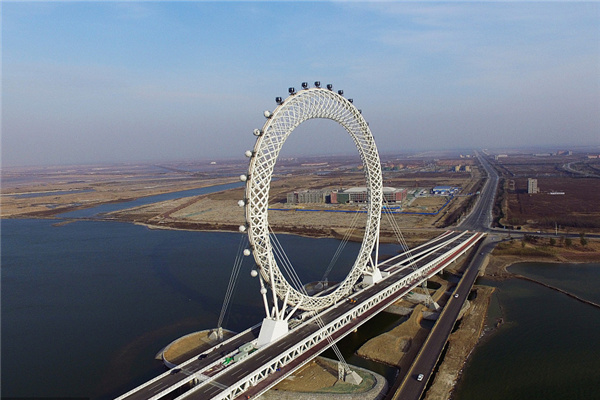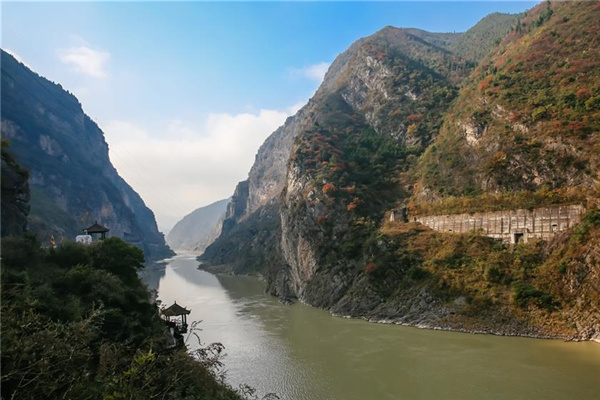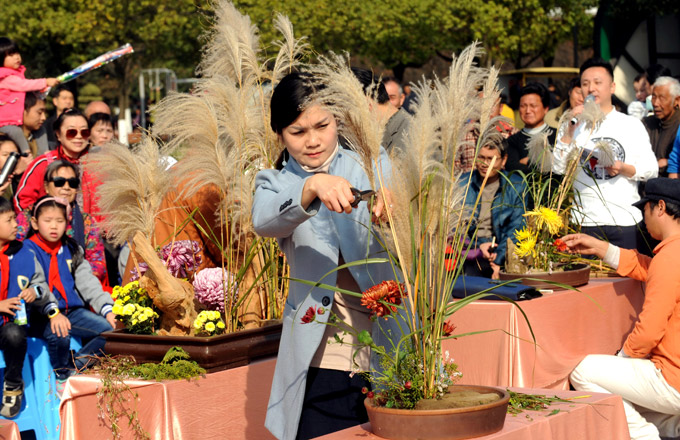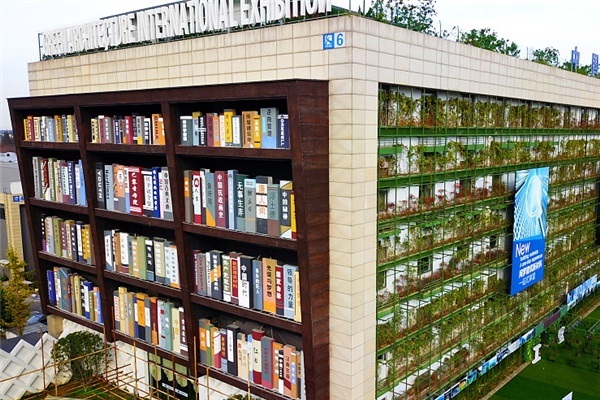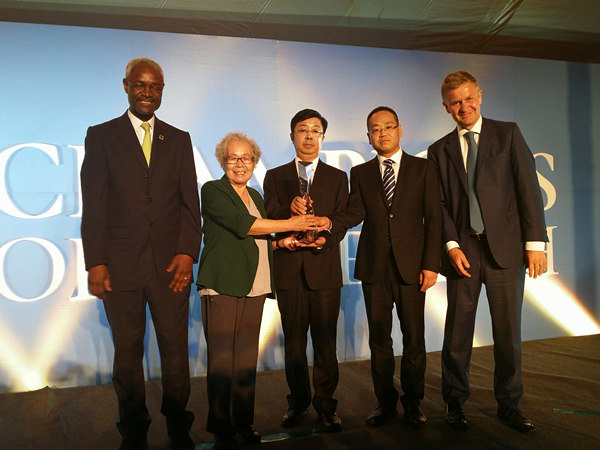

Septuagenarian Shi Shuzhu looks much younger than his actual age.
Every morning, he walks several kilometers to the nearby woodland where he has spent most of his life to check whether the newly planted trees are growing well.
"If any of the saplings have been damaged by wind or are dead, new ones must be planted," Shi said. "It's like mending clothes."
Shi, who previously served as Party Secretary of Songhe village, Minqin county, Gansu province, is a hero in the eyes of local people. For the past 50 years, he has been leading them in their fight against the encroaching desert.
Minqin county, bounded by the Tengger and Badain Jaran deserts to the east, west and north, is increasingly threatened by the sprawling expanses of sand.
Located in the lower reaches of the Shiyang River, Minqin used to be a lush oasis with several lakes.
But now it has become one of the most arid areas in China. With annual precipitation of 110 mm, the area's annual evaporation reaches 2,646 mm. The Minqin oasis is still about 1,000 sq km, but is shrinking at an alarming rate.
Shi recalled that, when local people started their battle against the desert, there were only around 10 trees in the vicinity of the village.
"There were few trees to stop the wind and sands. The strong wind and sprawling sands in turn made it impossible for saplings to survive," Shi said.
Shi eventually came up with a way to enable trees to survive the strong winds and sandstorms: stabilize the sand dunes by filling them with straw, and then plant trees.
The method was proved to be successful and won the village its first patch of green land, which generated hope among the locals.
Shi's method of stabilizing the sands has been dubbed as the "Songhe model" and was promoted in arid areas throughout the province.
Today, thanks to the efforts of local people, this little patch of green land has become acres of forest.
In Minqin county, a slogan, originally coined by Premier Wen Jiabao, can be seen everywhere, it says, "We must never allow Minqin county to repeat the tragedy of Lop Nur".
Lop Nur used to be a lake of about 10,000 sq km in the Tarim Basin of Xinjiang Uygur autonomous region. Its water area had kept shrinking since the early 1900s before the entire lake dried up and turned into desert in 1972.
Although Shi and his villagers have been fighting the encroaching desert for 50 years, planting trees is not enough to save Minqin, which has also had to cope with the impact of rapid economic development and an increased population.
The ground water level of Minqin county has dropped by 50 percent to 1 m over the past 20 years due to the overuse of water resources.
As a result, local people have stepped up their fight against desertification in recent years. Every year, the county allocates 10 million yuan to a special fund to fight desertification.
Besides planting trees, Minqin county is also promoting water-saving technologies in local agriculture, and has closed all of its wells.
Some of the villagers have been moved out of the county to other areas, with richer water resources, more than 100 km away from Minqin, in a bid to ease pressures on the local water supply.
By the end of 2008, Minqin county had treated almost 667,000 hectares of desertified land.
China is one of the countries that suffers most from desertification. The area of desertified land in China amounts to 1.74 million sq km, accounting for 18.12 percent of the country's territory.
Every year, the direct economic loss from desertification reaches 50 billion yuan. Expanding deserts threaten about 400 million people, or one third of the country's population.
(China Daily 02/23/2009 page5)


